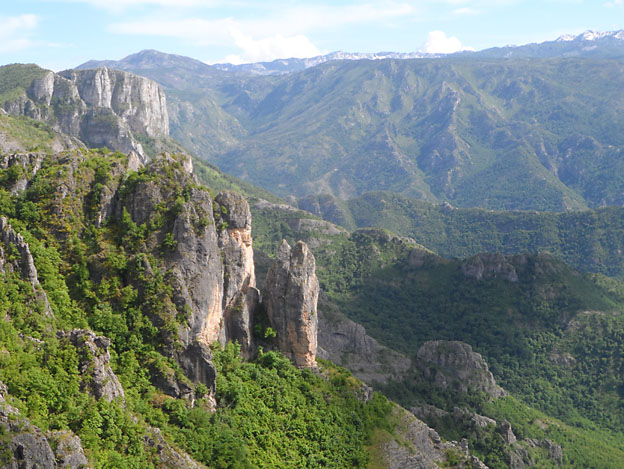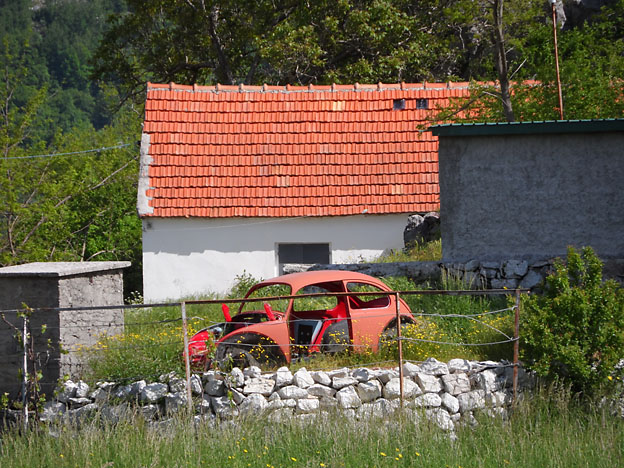
Beautiful Montenegro: on the
way from Nikšić to Trebinje
As far as Pholcidae are
concerened, Europe is certainly not a center of diversity, but there
are a few interesting species around the Mediterranean. This is
particularly true of the eastern Mediterranean, where the genera Hoplopholcus and Stygopholcus have their center of
distribution. In May 2014 I visited Bosnia and Herzegovina and
Montenegro, mainly to collect Stygopholcus
for molecular work.


One species or two? Stygopholcus specimens
from Vjetrenica pećina
(left) and Pavlova
pećina (right), both Bosnia
and
Herzegovina.
Two nominal species and one
subspecies occur in the area, but their taxonomy is confused due
inconsistencies with type localities among previous authors. In order
to solve this puzzle we visited all three type localities, Ilijina
pećina and Pavlova pećina near Trebinje, Studenačka pećina near Nikšić,
and Pećina u Ivici near Zavala. Stygopholcus
was common in all of them, but to our surprise is was even
ubiquitous in the forests around the caves, in crevices and under
stones.

Dubrovnik, the pearl at the Adriatic Sea, seemingly fully recovered from the Yugoslavia war.